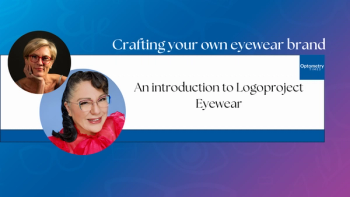
Data can enhance contact lens wear safety
Soft contact lens wearers seek unscheduled follow-up care for a variety of problems aside from inflammatory and infectious events, according to new findings.
Key Points
The data were presented by Robin Chalmers, OD, FAAO, adjunct professor, Indiana University School of Optometry, Bloomington, at the 2009 annual meeting of the American Academy of Optometry. The study included 1,276 soft contact lens wearers seen in two private practices in California and Georgia, and at the Indiana University School of Optometry clinic.
All patients who presented for contact lens care for any reason during a 6-month period beginning in October 2005 were included. Follow-up comprised 4,154 years of contact lens wear over a data capture period of up to 2 years. In all, researchers recorded 4,120 office visits. Approximately 18% of patients had some type of event that caused them to seek eye care over the observation period.
The leading cause for patient visits was non-contact lens related infectious events, such as conjunctivitis (5.3% of observed), followed by mechanical and staining problems (5.1%), inflammation (3.7%), and allergies (3.4%). Lid problems, irritation, and blepharitis were experienced by 2.7% of patients. There were only four cases of microbial keratitis.
"Previous studies examining risk factors for contact lens-related events have appropriately focused on significant and serious events, including microbial keratitis and corneal infiltrative events," said Dr. Chalmers. "However, the populations used for those analyses are often derived from controlled trials, and the last two large observational studies in the United States were conducted in the 1990s."
She added, "Our research represents a population-based, post-market investigation and provides real-world insight from a contemporary group of contact lens wearers."
Charts were reviewed, and the records were scanned for any identified "event." Three independent reviewers each categorized each event and then came to a consensus on its classification. Data also were extracted on patient demographics and lens type, although information on the care system and extended wear were not recorded consistently by the sites and therefore were not included in the analysis.
"We did not define events based on any established list of preferred terms. Rather our approach was to cast a wide net to capture all of the events and then winnow them into categories through adjudication," she said.
Study population
The patients included in the study reflected a contemporary group of soft contact lens wearers with 44% in silicone hydrogel lenses, 44% wearing conventional hydrogel lenses, and 11% using daily disposable lenses.
In multifactorial analysis of all types of events, patients younger than 25 years of age had a 35% increased risk for any event, while high ametropes had a 50% increased risk. Being a new contact lens wearer at the first visit was associated with significantly lower risk.
"Everyone included in the study had the same opportunity for follow-up, so the protective effect of being a new lens wearer might be a signal of drift in compliance that occurs after longstanding lens wear," said Dr. Chalmers.
In analyses based on event category, high ametropia was the only significant risk factor for non-contact lens related infections as well as for mechanical and staining events.
Newsletter
Want more insights like this? Subscribe to Optometry Times and get clinical pearls and practice tips delivered straight to your inbox.















































.png)


